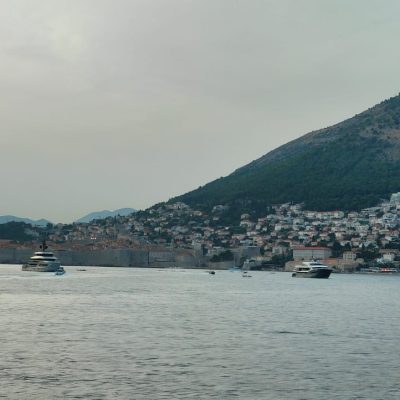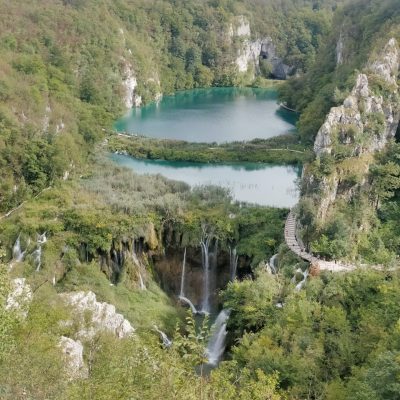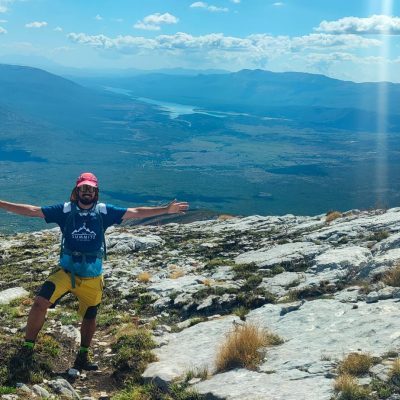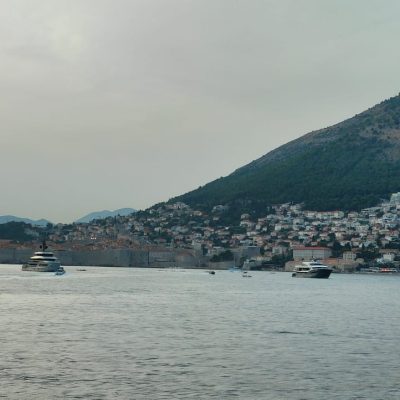SUMMITS
SUMMIT Nº 22: DINARA (CROATIA)
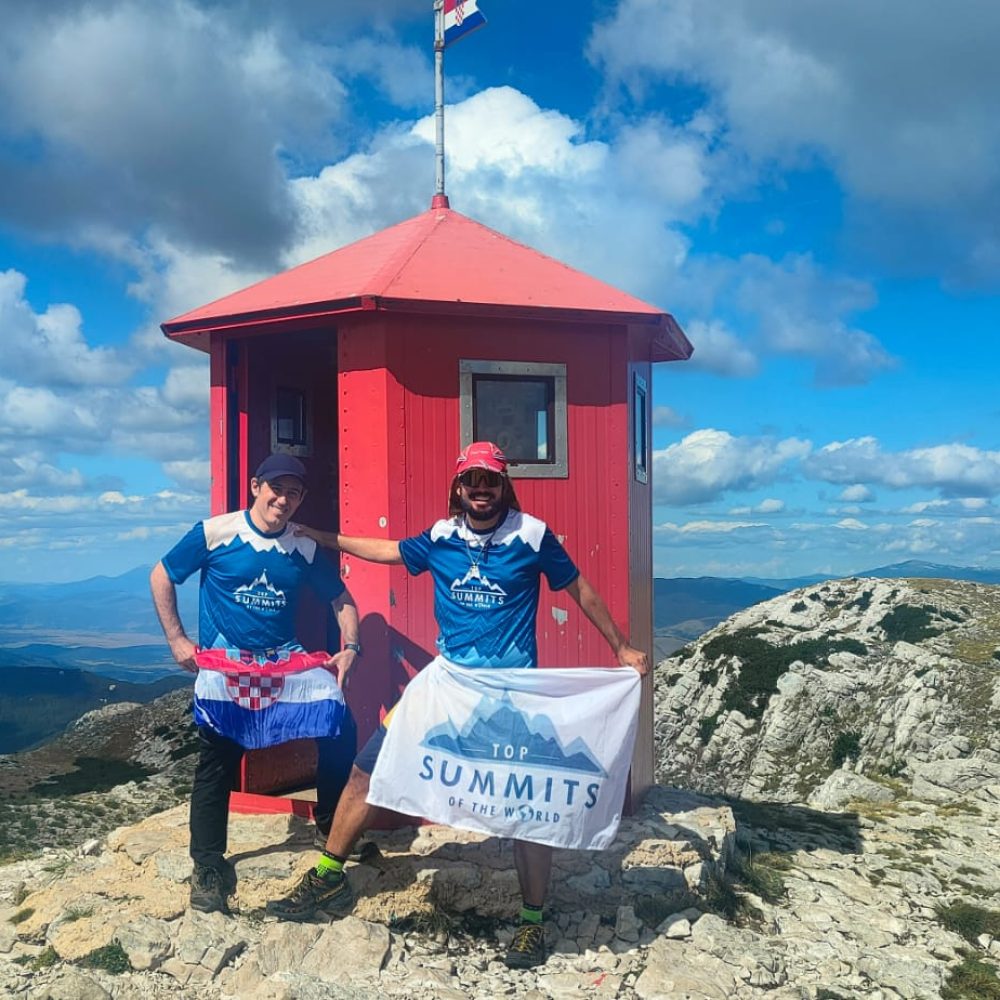

CROATIA
DINARA
07/09/2024
ALTITUDE
1.831 m
ÒSCAR SOLSONA AND ANDREU LÓPEZ

DIFFICULTY LEVEL
LOW
CHRONICLE
Croatia (in Croatian Hrvastska), officially the Republic of Croatia, is a state in Mediterranean Europe located in the transition zone between Central Europe and the Balkans. It is bordered to the north by Slovenia and Hungary, to the northeast by Serbia and to the southeast by Montenegro and Bosnia and Herzegovina, and to the south and west by the Adriatic Sea.
Croatia is one of the youngest states in Europe, having been created on June 25, 1991 after having been part of Yugoslavia for decades (consisting of 6 Socialist Republics such as Croatia, Bosnia and Herzegovina, Slovenia, Serbia, Montenegro and Macedonia). Croatia and Slovenia were the first republics to declare their independence in a context of the rise to power of nationalist parties in Serbia. Macedonia and Bosnia also declared their independence, not without resistance from Serbia and leading to the bloody conflict known as the Yugoslav War.
Our Balkan adventure starts in Split, the largest city in Dalmatia (a region that stretches from the northwest to the southwest of the Adriatic coast) and is the second most populated city in Croatia with about 160,000 inhabitants. Split has the uniqueness of having been built inside, and later around, the palace of the Roman emperor Diocletian. During our visit to this coastal town with Roman origins (declared a World Heritage Site by UNESCO), it is therefore a must to visit the immense palace built by the Emperor Diocletian as well as the beautiful streets that surround it. At dusk, we take advantage of the last hours of sunlight of the day to take a tourist boat that takes us around the city, as well as to witness, from a very privileged position, the sunset.
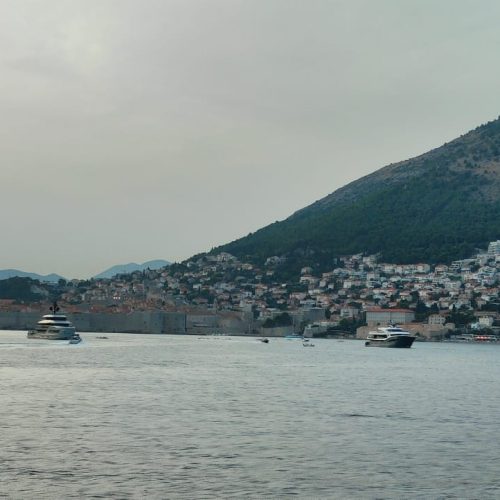
On our second day of sightseeing in Croatian lands, we have almost 4 hours of driving to do, which is the distance between Split and the capital Zagreb. The latter has a population of nearly 800,000 inhabitants and its metropolitan area has more than a million people, which is approximately a quarter of the total population of Croatia. The main Croatian attractions are on the Dalmatian coast, although in the capital of the country you can spend an afternoon and we would recommend visiting the “green horseshoe” (a succession of parks and gardens arranged in a “U” shape that cover an area of almost 3 km and along which there are some super emblematic buildings from the Austro-Hungarian period) as well as Ivana Tkalčića Street (one of the main commercial and leisure arteries of the city that is full of cafes, restaurants and terraces where you can taste the typical local dish “Strukli”), the Zagreb Cathedral and Ban Jelačić Square. For those of you who have more time on your agenda, it is very typical to take the Zagreb funicular, which, with its 60-metre route, is the shortest in the world. Finally, in the vicinity of the funicular, there is a network of tunnels known as the Grič Tunnels, which served as an air raid shelter during World War II and, more recently, during the Yugoslav War.
Having completed our visits to Split and Zagreb, it is necessary to strike a balance between the urban and natural surroundings, so we are off to visit the Plitvice Lakes National Park. Plitvice could be known as the Water Paradise, as it has 16 small lakes, as well as many waterfalls and streams. Declared a Natural Park by the authorities of the former Yugoslavia in 1949, the Plitvice Lakes have been recognised as a nature reserve by UNESCO since 1979. Plitvice has 30,000 hectares of unspoilt nature and we recommend following the itinerary that runs through the 16 lakes and which will take you about 6 hours to complete. The trails are perfectly signposted and adapted and the entry fee, which is not cheap at 40 euros, includes a trip on a boat that crosses the main lake, which is about 2.5 kilometres long. On a visit to the park, you cannot miss the sight of the largest waterfall in the park, with a free fall of 76 metres.

We leave Plitvice and head to the town of Knin, a city located near the Dinaric Alps and which will be our base before the ascent of Dinara, which with its 1,831 meters is the highest point in Croatia.
It is Saturday. I get up early at around 7:00 in the morning, although Oscar and I have agreed to leave the apartment at 9:00. First of all, I have a little breakfast (the very kind and hospitable owners have prepared some croissants for us), I read Robin Sharma’s book “The wealth that money can’t buy” and I do some stretching exercises that the body always appreciates when it has to do physical activity.
Before leaving for the start of the route we are going to buy provisions for the day (cold cuts, bread, fruit, soft drinks and some nuts) and so that he doesn’t get jealous, we are also going to feed our rental car. We arrived at the small village of Glavas (it has no more than 4 houses) around 10:00 and after finishing adjusting our backpacks we set off towards the 1,831-metre mark.
The start of the route is at an altitude of 581 metres. A long route of 17.64 kilometres and a positive gradient of 1,441 metres awaits us. The route is perfectly marked with circles with a white centre and a red outline, and the path is quite well defined. The day is very hot, although rain was forecast for the whole week.
Very soon after starting to walk, we become aware of some bad news: the mountain is beginning to take on black tones. About 3 weeks before our visit, Dinara was the victim of a fire that affected dozens of kilometres and that considerably saddens our progress and ascent. We make a first stop at the height of just 1,000 metres where a water fountain and the shade of some trees are very welcome. We take a break to drink, as well as eat the bananas we had bought and some nuts.
After a hundred metres from the place where we made the break, we find a fork in the route and we choose to advance on the left (so we will return on the right). After the fork, the path becomes steeper and the progression becomes harder until we reach an unguarded shelter at the height of 1,600 metres. From this point, on the horizon you can see a little red house that is the summit of Dinara (also known as Signal). After passing the unguarded shelter, we have a more pleasant landscape in several ways: the fire did not reach these heights, and the path advances smoothly with very little inclination. The little red house is increasingly closer to our eyes. We are surprised by the lack of hikers in the area and it seems that the Croatians prefer the sea and football, where Luka Modric has taken on the status of a semi-God.
The 1,831-metre Croatian summit is reached and we take advantage of the presence of Danish hikers on top of the summit to immortalise the moment by taking some photos together with Oscar. It is my 21st world summit (22 countries) and the project is already beginning to take on a considerable dimension.
We eat quietly on top of the summit and resume the march, although we do not repeat the path of ascent to the summit and we advance along the other side of the mountain which, although affected by the fire, has not been as bad. The ascent to the summit has taken us about 4 hours and the descent takes us about 2.5 hours.
Once we reach the car we say goodbye to some Bulgarian companions who have shared the descent with us and on the route we have met people of various nationalities, although no Croatians, who we will meet on the beach. And off we go… we will sleep in Trogir (a town near Split) before heading to the last stop of this Balkan adventure. We have left the star Dubrovnik for the end of the trip.
The journey between Trogir and Dubrovnik is long and takes about 3.5 hours. We arrive at our “sobe” (meaning “rooms”), which are private houses where you can sleep and which are very characteristic of Croatia where, for example, hotels are not so common. We check in very quickly since at 2:00 pm we have a kayaking activity booked around Dubrovnik and with the car we head as close as possible to the meeting point. The cost of parking there is 10 euros per hour (yes, 10 euros per hour) but we have no alternatives since, walking from the apartment, we would not have arrived on time.
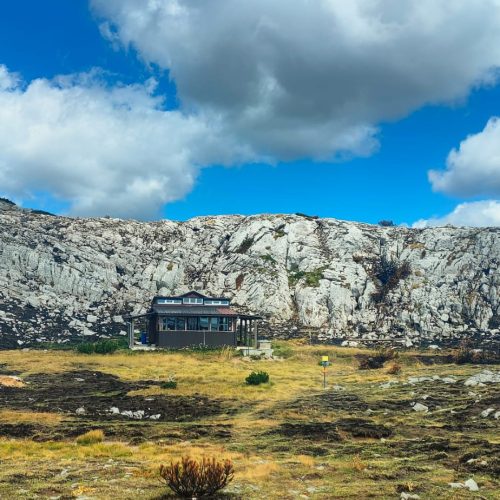
Oscar has no previous experience in kayaking, so I sit behind the two-seater. I haven’t been in a kayak for years, but during my stays in Llançà a few years ago, I had acquired considerable experience in handling them. The truth is that my memory does not fail me, Oscar picks it up quickly enough and the combination of this makes our boat climb positions from the last one to the leading ones. The route around Dubrovnik is very nice and includes a 30-minute stop in a cove shaped like a cave where we can swim, as well as eat the small “picnic” that they have prepared for us. We arrive at the “port” at about 4:00 p.m. and quickly go to pick up our car, which is located on a very precious asset in the center of Dubrovnik called space. They don’t charge us for the 2 hours and 15 minutes that we’ve been there, but instead they apply a fantastic rounding up of 45 minutes and we end up paying the equivalent of 3 hours and an amount of 30 euros.
In the apartment we shower quickly and leave quickly too because at 18:00 we have booked another activity in the city and that is watching the sunset on a pirate ship with a show included. The show/animation inside the ship could be greatly improved so we focus on enjoying the contemplation of the walls of Dubrovnik, as well as the cliffs and islands that surround it.
We recommend you get lost in Dubrovnik at night, discover its charming streets and squares, eat fish in one of its restaurants, have a drink in one of its bars installed on cliffs. We also recommend visiting Dubrovnik outside the months of July and August since, apart from being very hot, the tourist demand and attendance is very intense. We were planning to go out and party to end the trip, but it has been a day full of activity, we are a little tired of not stopping so we retreat to the “sobe” to rest and prepare for the last activity of the trip that will undoubtedly become an unpredictable adventure.
The “city tour” we booked for our last morning in Dubrovnik turns into a real universal downpour. I have never found myself under such intense rain without retreating to a roof. The tour guide Maja, a true professional, stoically endured the rain without an umbrella and gave a very careful explanation of the city while the streets turned into rivers and the stairs turned into waterfalls. And with the arrival of the rains, our Balkan journey comes to an end.
GALLERY
